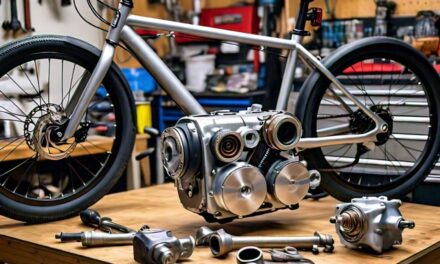Bicycle helmets are an essential piece of safety gear for cyclists of all ages and skill levels. Designed to protect riders from head injuries in the event of an accident, these helmets are more than just a precaution; they are a vital tool in ensuring a safer cycling experience. The primary function of a bicycle helmet is to absorb the impact energy during a collision, thereby reducing the risk of brain injury and other serious harms.
Over the years, the design and technology of bicycle helmets have evolved significantly. Modern helmets are constructed from advanced materials such as expanded polystyrene foam (EPS) and polycarbonate shells, which offer a combination of lightweight comfort and robust protection. The inner foam liner compresses upon impact, dissipating energy, while the outer shell helps to protect the foam and provides structural integrity.
Furthermore, the importance of wearing a bicycle helmets is supported by numerous studies, which consistently demonstrate that helmets can reduce the risk of head injuries by up to 85 percent. As a result, many jurisdictions around the world have implemented laws requiring cyclists, particularly children, to wear helmets.
Choosing the right helmet involves considering factors such as fit, ventilation, weight, and visibility. A properly fitted helmet should be snug but not uncomfortable, covering the forehead and not tilting back or forth. As cycling continues to grow in popularity as a form of recreation and commuting, the role of bicycle helmets in promoting safety and reducing injuries remains as crucial as ever.
Table of Contents
Gear Up! Benefits of Bicycle Helmets
Here, we delve into the multifaceted benefits of bicycle helmets, emphasizing why they are indispensable for every rider.
1. Protection Against Head Injuries
The primary benefit of a bicycle helmets is its ability to protect your head during an impact. According to research, wearing a helmet can reduce the risk of a severe head injury by up to 70% and decrease the likelihood of a fatal injury by approximately 65%. Helmets are designed to absorb the impact energy through their foam construction, which compresses, thereby reducing the force before it reaches your head.

Mechanics of a Helmet
- Outer Shell: The hard outer shell of a helmet is designed to skid and spread impact forces over a broader area.
- Inner Liner: Typically made from expanded polystyrene (EPS) foam, the liner absorbs the energy of an impact, thereby reducing the force transmitted to the skull.
2. Compliance with Laws and Regulations
In many regions around the world, wearing a bicycle helmets is not just a safety measure but also a legal requirement, especially for children. These laws are in place to ensure a basic level of safety for cyclists, acknowledging the significant protection helmets offer against brain injuries.
3. Promotion of a Safety Culture
Wearing a helmet not only protects the individual but also promotes a culture of safety. It sets a responsible example for children and underscores the importance of protective measures in all sports and activities. As more cyclists wear helmets, it becomes a norm, thereby encouraging even the occasional riders to gear up for safety.
4. Enhanced Visibility
Many modern helmets are equipped with reflective materials and even built-in lights. These features enhance the visibility of the cyclist, making them more noticeable to drivers, especially in low-light conditions or during night time. Improved visibility is crucial in preventing accidents.
5. Features Benefiting Performance
Aerodynamics
- Advanced helmets designed for road cycling and racing often incorporate aerodynamic designs. These helmets reduce air resistance and can actually improve a cyclist’s speed and efficiency.
Ventilation
- Good ventilation in a helmet is essential for comfort, especially during long rides or in hot weather. Vents allow for air circulation over the scalp, reducing heat buildup and keeping the cyclist cooler.
6. Weather Protection
Helmets also provide a degree of protection against the elements. For instance, during rain, a helmet can help keep water out of the eyes through its visor. In sunny conditions, it can provide shade and protect against sunburn.

7. Encouraging Risk Management
Understanding the protective benefits of bike helmets might encourage cyclists to adopt other safety measures such as using proper lights, reflective gear, and following traffic rules. It reflects an overall attitude of mindfulness and caution while riding.
8. Psychological Benefits
Wearing a helmet can also instill confidence in riders, especially beginners and children who might feel vulnerable on the road. This confidence can enhance their focus and enjoyment of the activity without the constant fear of injury.
9. Economic Benefits
By reducing the risk of head injuries, helmets also decrease the potential medical costs associated with cycling accidents. Serious head injuries can lead to substantial medical bills, long-term rehabilitation, and loss of productivity. Thus, helmets are an economical investment in personal safety.
10. Customization and Personal Expression
Today’s bike helmets come in various styles, designs, and colors, allowing cyclists to express their personal style while staying safe. Whether you prefer a sleek, aerodynamic helmet, a brightly colored one for visibility, or a helmet with funky designs, there is something available for everyone.
Choosing the Right Bike Helmets
Selecting the right helmet is crucial for ensuring maximum protection and comfort. Here are some tips:
- Size and Fit: Ensure the helmet fits snugly. It should sit level on your head and should not rock forward, backward, or side to side.
- Adjustments: Look for helmets with adjustable straps and a dial at the back for fine safety starts at the top.
11. Supporting Technological Integrations
Modern helmets are increasingly integrating new technologies that enhance safety and convenience. These include Bluetooth speakers for safe listening to music or GPS navigation instructions, rear-facing cameras for monitoring traffic, and even collision detection systems that alert riders to potential dangers. Such features make riding not only safer but also more enjoyable by allowing cyclists to stay connected and aware of their surroundings.
12. Impact on Insurance Premiums
Wearing a helmet may also have an indirect benefit on insurance premiums for cyclists. Some insurance companies recognize the reduced risk of head injuries and may offer lower health or accident insurance premiums to cyclists who consistently wear helmets. This reduction in premiums can further offset the cost of purchasing a helmet.
13. Contribution to a Sustainable Lifestyle
Cycling itself is a green mode of transportation, and using a helmet consistently complements this sustainable choice. By ensuring their safety, cyclists are more likely to stick with cycling as a regular mode of transport, reducing reliance on cars and contributing to lower carbon emissions. In this way, helmets support not only individual safety but also broader environmental goals.

14. Setting Industry Standards
The widespread use of helmets also drives helmet manufacturers to continuously improve their products. This competition leads to better quality, more innovative safety features, and designs that cater to specific needs like mountain biking, road racing, or casual commuting. As more people wear helmets, the feedback loop from user experience to product enhancement becomes a powerful driver of industry standards.
15. Social Influence and Community Building
When community leaders, cycling clubs, and schools advocate and model helmet use, it encourages wider community compliance and promotes a collective spirit of safety. This can be particularly effective in settings where cycling is a significant part of the local culture. Community cycling events often require participants to wear helmets, further normalizing their use and reinforcing the message that safety is a priority.
How to Care for Your Helmet
To maximize the benefits of wearing a helmet, it’s essential to keep it in good condition:
- Inspect Regularly: Check for cracks or wear and tear. If the helmet has been involved in a crash, replace it immediately, even if no damage is visible.
- Clean Properly: Use mild soap and water to clean the helmet. Chemicals or harsh cleaners can degrade the materials of the helmet.
- Store Safely: Keep the helmet in a cool, dry place away from direct sunlight. UV light can weaken the helmet’s materials over time.
The Future of Helmet Technology
Looking ahead, the potential for innovation in helmet design is vast. Emerging technologies like augmented reality could one day be integrated into visors to provide real-time information about road conditions, navigation, and more. Advanced materials might make helmets lighter yet stronger, and customization could reach new heights with 3D printing technologies.
Conclusion
The humble bicycle helmets does much more than protect your head during a crash. It is a multifunctional tool that supports safer, more enjoyable, and more responsible cycling. The ongoing development of helmet technology promises even greater advances in safety and functionality. As cycling continues to gain popularity as a form of sustainable transportation, the role of the bicycle helmets as a critical piece of safety equipment is undeniable. Whether you’re a casual rider, a commuting cyclist, or a competitive racer, the importance of investing in a good-quality helmet and wearing it every time you ride cannot be overstated. Remember, when it comes to cycling, a helmet isn’t just an accessory—it’s a necessity.










